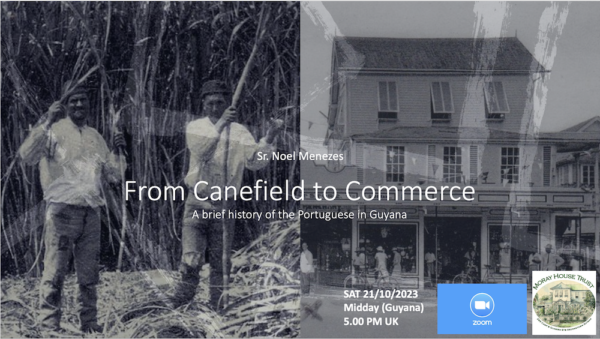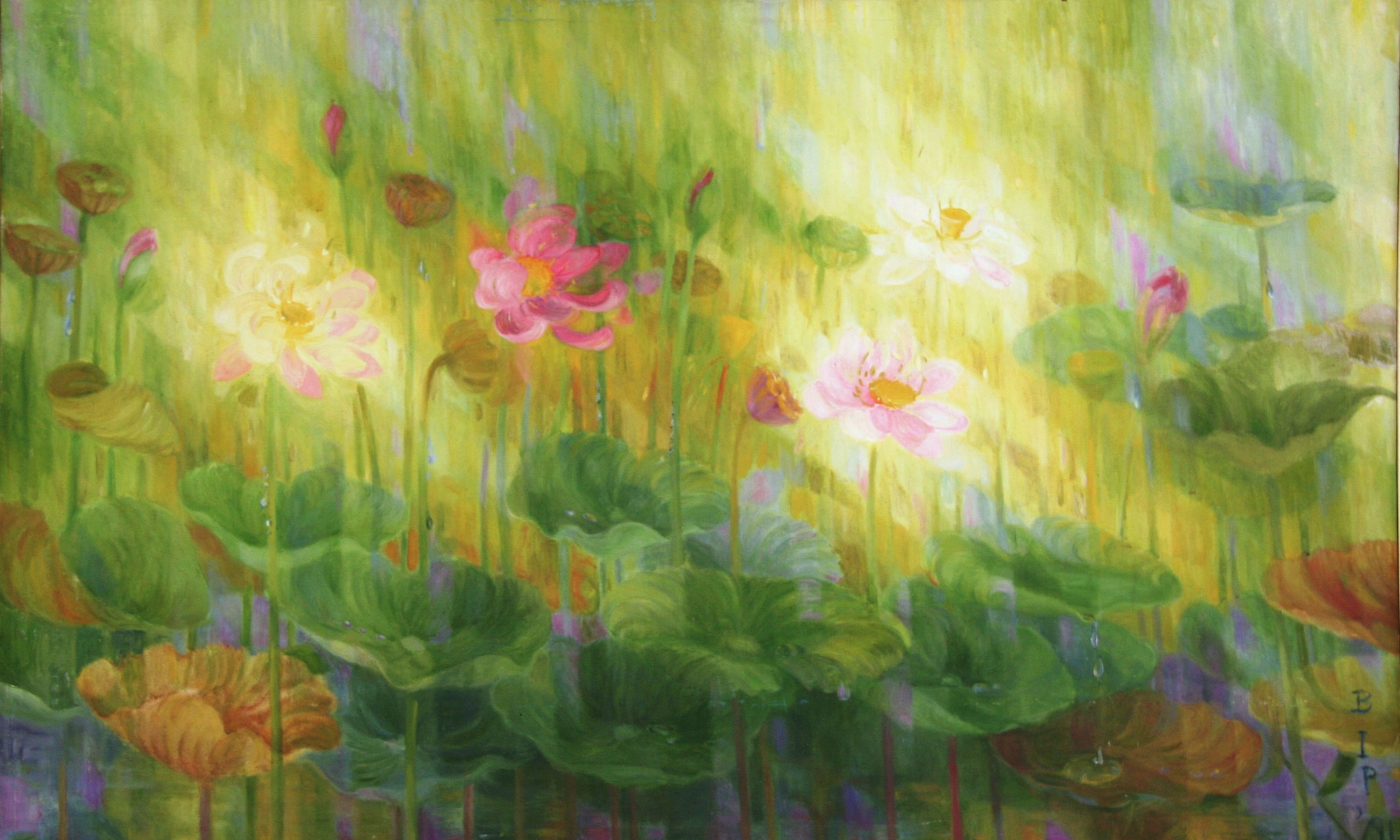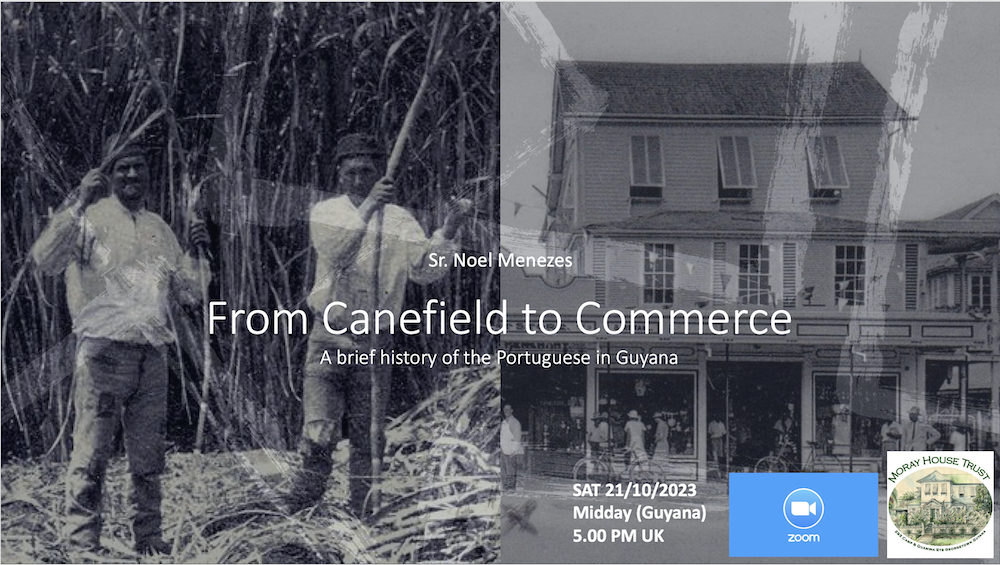Activity: Short film
Topics: History
Date: Saturday 21st October 2023
Time: Midday (Guyana)
YouTube: https://youtu.be/BzBNDA8JYJ0

This was the Zoom screening of a short film dedicated to the work of the late Professor Sr. Noel Menezes. The film, From Canefield to Commerce: a brief history of the Portuguese in Guyana, takes the form of readings accompanied by images (photographs and illustrations). It draws on Sr. Menezes’ historical research. The readings also include research by Dr Jo-Anne Ferreira, who has studied the Portuguese migration to the Caribbean, with a particular focus on Trinidad. The film lasts about 45 minutes.
You Tube Link: https://youtu.be/BzBNDA8JYJ0
MODERATOR’S INTRO
[…]The aim, in preparing this short film, was to pay tribute to the life and work of the late Sr. Noel Menezes. Inevitably, given the scope of her work both as a historian and a humanitarian, this is only a glimpse of what she achieved. Sr Mary Noel Menezes was a Sister of Mercy and an Emeritus Professor at the University of Guyana. Sr Noel and Sr Celine Marie also presided over the St. John Bosco Orphanage for several decades. Noel was, therefore, an integral part of the social and cultural life of Georgetown, of the university and of the village of Plaisance. Such is the way that our lives interweave and overlap in a small society.
It’s about a year since Sr Noel died. It seems appropriate to revisit some of her research and to pay tribute to a remarkable life. First, then, a personal tribute to two nuns. I got to know Sr Noel and Sr Celine almost 40 years ago, when I accompanied a clutch of nervous little boys on their journey from the Red Cross Convalescent Home to the Orphanage in Plaisance. Noel and Celine were the Sisters of Mercy in charge of the Boys Orphanage. They worked as a team. Over the years, as I visited those little boys, I got to know the staff and the other children. It was a warm and caring institution. The children went to the village school and played cricket and football in the field alongside the orphanage in the afternoons. They were encouraged to play, to talk and to laugh as well as to study and to pray. People would often bring meals for the boys at weekends. It was usually to mark the donor’s birthday, a repeating act of kindness and selflessness that remains etched in my memory. A particular favourite with the children was ‘baked chicken and fried rice.’ The nuns were strict, sometimes heartbreakingly so when little ones of five or six were involved, but they were fair. Over the years that I visited, hundreds of boys passed through the orphanage. In one of life’s enduring ironies, this pair of nuns served as de facto parents to a village of young men. A remarkable feat, whether or not you subscribe to their religion.
To my eternal shame, I’m not sure that I ever had a substantive discussion with Sr. Noel about her research, though I knew of it because my mother assisted her by transcribing records from the Archives. Having now read The Portuguese of Guyana: a Study in Culture and Conflict, in order to prepare this short film, that omission fills me with regret. As others will discover, her research throws up sparks of recognition. We see ourselves and our kin in the communities and characters she describes. We recognise the patterns of behaviour.
So, much of what follows is not a finger pointing exercise. It is a mea culpa.
Somewhere in our bustling towards the future, we have buried the past. Our oblivion is so total that it amounts to an erasure of memory. This is warping our culture. Our perspective is skewed, our vision diminished.
I is a long-memoried woman. So says the narrator of a poem by Guyanese poet Grace Nichols. That may be so. But, as a nation, our collective memory is short and blurred.
We are a short memoried nation. It is a trait that many of our constituent peoples share.
Professor Clem Seecharan begins his study of Indo-Guyanese politics and identity with a chapter entitled: Amnesia and Myth in the Making of the Past. In it, he remarks on the ‘general absence of a sense of history among Indo-Caribbean people – their conception of the past as timeless, an unfathomable void in ancestral space.’
The same could be said of other migrant groups in Guyana. And yet, and yet, most of our families have only been here for a few hundred years. That’s a handful of generations.
The broad narrative arc of Sr. Noel’s study of the Portuguese traces the arrival (in stages) and the assimilation (in stages) of a group of immigrants. These immigrants came from a small island and shared a common language and religion. There are interesting parallels with and divergences from the history of the Indo-Guyanese. 70% of the Indian migrants to British Guiana came from the United Provinces, now Uttar Pradesh. Arguably, this common point of origin went a long way towards sealing divisions of caste and creed among that immigrant group that would have been insurmountable had they stayed in their homeland. In both cases, the immigrants’ reception in the colony served to cement bonds within the group.
As Noel argues, ostracised by the planters and disliked by the African labourers, the Portuguese turned in on themselves. They worked together, prayed together, partied together and married each other. Noel also shows how, despite half a century of simmering antipathy, the Africans and Portuguese formed a political alliance in early twentieth century British Guiana in opposition to the plantocracy.
What is the point of history?
It’s a bit like when you go the optician for an eye test, somewhat reluctantly, as you think you can see perfectly well. Then they add a lens and suddenly your vision is a little sharper, the edges are more clearly defined.
History is a lens.
It gives perspective to the present, it informs the future.
It confers a sense of identity, both for the individual and for the collective.
If we ignore our past, we are adrift, untethered, unmoored.
We flounder towards the future.
These readings draw on three sources – a short essay by Sr. Noel about the history of the Portuguese and her 1992 book entitled The Portuguese of Guyana: a study in Culture and Conflict. They are bookended with a broader, regional overview taken from the work of Dr Jo-Anne Ferreira at UWI. Particular thanks to Dr Ferreira for graciously allowing us to include her overview to frame Noel’s research. Thanks also to the readers for their contribution to the project.
SOURCES (AVAILABLE ONLINE):
1: A brief history of the Portuguese in Guyana. An essay by Sr. Noel Menezes. Stabroek News 2nd June 2013 https://www.stabroeknews.com/2013/06/02/features/a-brief-history-of-the-portuguese-in-guyana-2/
2: Madeiran Portuguese Migration to Guyana, St. Vincent, Antigua and Trinidad: A Comparative Overview, Jo-Anne Ferreira, UWI 2006
https://www.researchgate.net/publication/281277075_Madeiran_Portuguese_Migration_to_Guyana_St_Vincent_Antigua_and_Trinidad_A_Comparative_OverviewUSEFUL LINKS:
A tribute to Prof Sr Noel https://drive.google.com/file/d/1uOqPgx-La7eIcFSks_O7vTbQglTxJe5g/view?usp=share_link
FURTHER READING (as suggested by the audience):
Mordechai Arbell, “The Jewish Nation of the Caribbean (describes the short lived settlement of the Pomeroon by the Sephardic Portuguese)”.
Cristiana Bastos, “Latitudes of Indenture: Portuguese Islanders in Post-Abolition Guiana Plantations and in Hawaii”
Joanne Collins-Gonsalves, PhD History, “The Entrepreneurship of the Portuguese of Georgetown, British Guiana 1840–1940” (2014)
Post-Emancipation Indenture and Migration: Identities, Racialization and Transnationalism (eds. Hassankhan, M. S., Hiralal, K., Bastos, C., Roopnarine, L. . New Delhi: Manohar. ISBN 978-81-19139-20-0.

